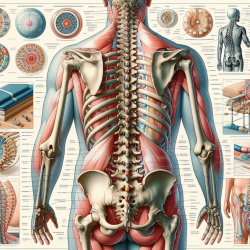Understanding Sacral Orientation and Scheuermann’s Kyphosis
As a practitioner in the field of physical therapy or orthopedics, understanding the nuances of spinal disorders is crucial. One such condition, Scheuermann’s kyphosis, has been the subject of extensive research, including a significant study titled "Sacral orientation and Scheuermann’s kyphosis" by Peleg et al. (2016). This research provides insights into the relationship between sacral anatomical orientation (SAO) and spinal alignment, offering a potential pathway for improving therapeutic approaches.
Key Findings from the Research
The study involved examining 2025 skeletons from the Hamann–Todd Osteologic Collection to determine the presence of Scheuermann’s kyphosis. The findings revealed that individuals with Scheuermann’s kyphosis had a significantly more horizontally oriented sacrum compared to those with normal spinal alignment. Specifically, the sacral angle was 44.44 ± 9.7° in affected individuals versus 50 ± 9.9° in the control group, highlighting a potential biomechanical factor in the development of the condition.
Implications for Practitioners
For practitioners, these findings suggest that assessing sacral orientation could be a valuable component in diagnosing and managing Scheuermann’s kyphosis. Here are some practical applications:
- Enhanced Diagnostic Accuracy: Incorporating SAO measurements into routine assessments may help identify individuals at risk of developing Scheuermann’s kyphosis, allowing for earlier intervention.
- Tailored Therapeutic Interventions: Understanding the sacral orientation can guide the development of personalized treatment plans that address specific biomechanical imbalances.
- Preventive Strategies: By recognizing the role of sacral orientation, practitioners can design exercises and postural adjustments aimed at minimizing stress on the spine, potentially preventing the progression of kyphosis.
Encouraging Further Research
While the study provides valuable insights, it also highlights the need for further research, particularly in living populations. Practitioners are encouraged to explore the following areas:
- Longitudinal Studies: Conducting studies that track changes in sacral orientation and spinal alignment over time in patients with Scheuermann’s kyphosis.
- Interventional Research: Evaluating the effectiveness of specific therapeutic interventions aimed at modifying sacral orientation and reducing kyphosis severity.
- Comparative Analyses: Comparing sacral orientation and spinal alignment across different populations to identify potential genetic or environmental factors influencing the development of Scheuermann’s kyphosis.
Conclusion
The study by Peleg et al. (2016) underscores the importance of sacral orientation in understanding and managing Scheuermann’s kyphosis. By integrating these findings into practice, therapists can enhance their diagnostic and therapeutic capabilities, ultimately improving patient outcomes. To read the original research paper, please follow this link: Sacral orientation and Scheuermann’s kyphosis.










